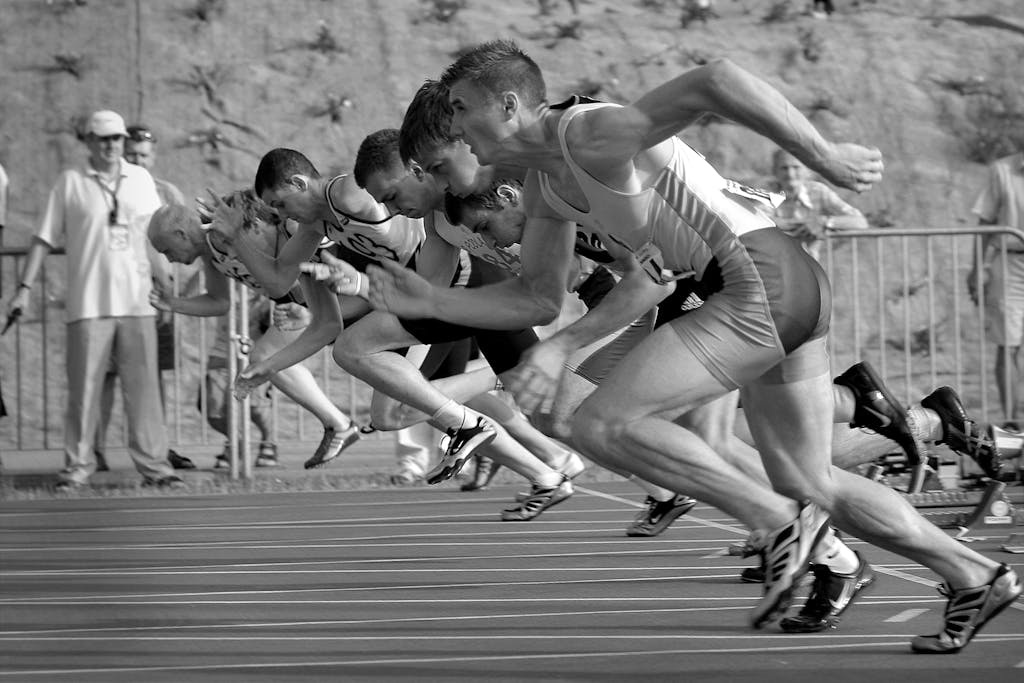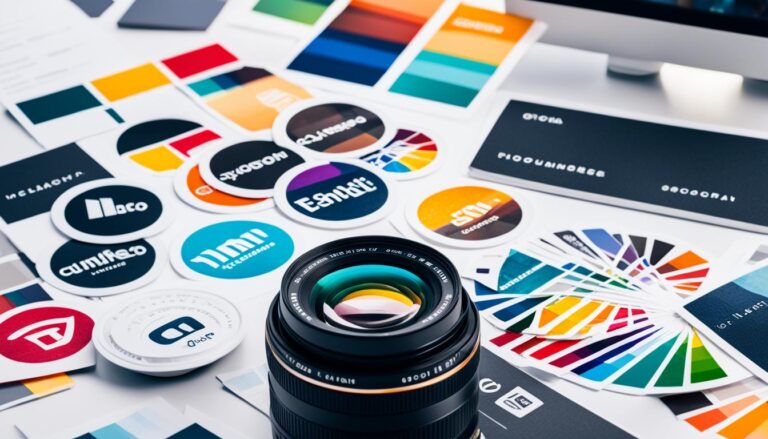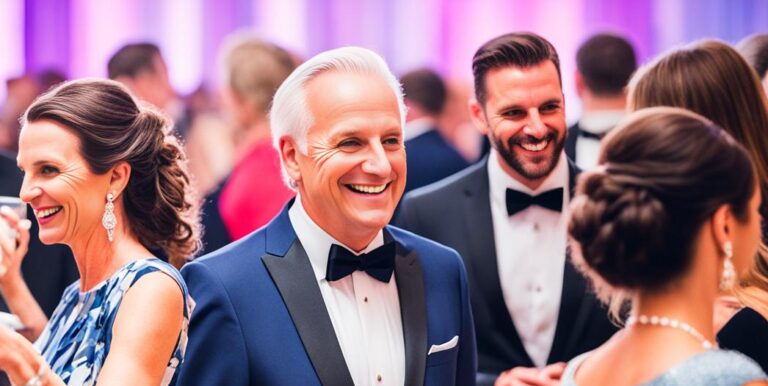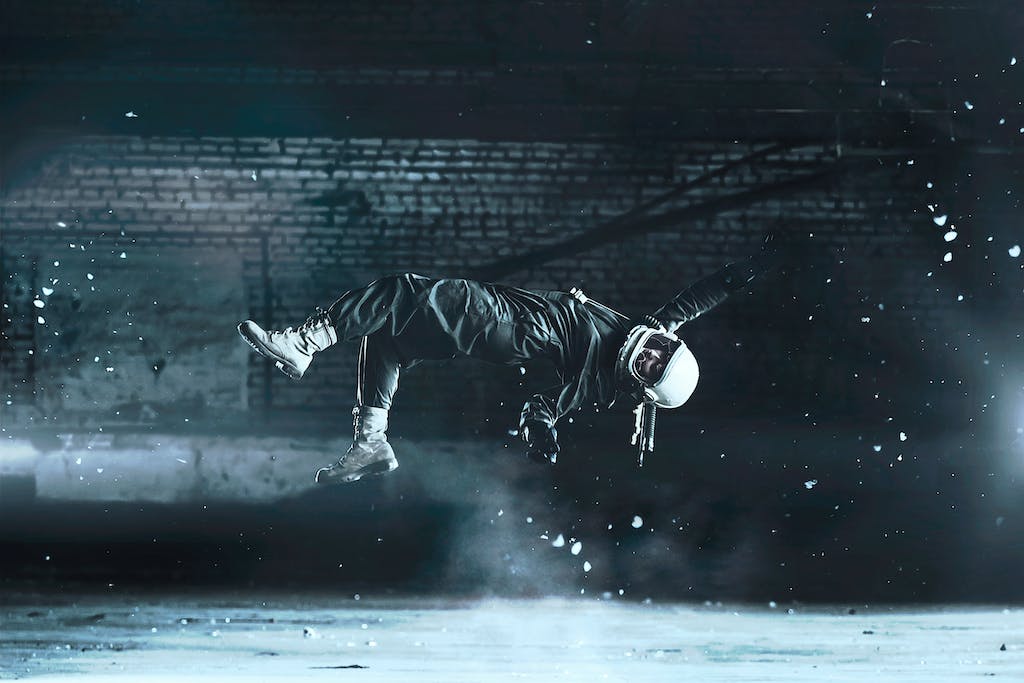How to Become a Sports Photographer
As I stood on the sidelines, camera in hand, I felt an indescribable surge of energy. The crowd’s roar, the sweat on the athletes’ brows, the intensity of the moment captured my heart and ignited a fire within me. Sports and photography have always been my two loves, and as I watched the action unfold through the lens, I knew I had found my calling as a sports photographer.
You’re in the right place if you share the same passion for sports and photography. In this guide, I’ll show you how to turn your love for both into a fulfilling and rewarding career in sports photography. Whether you dream of capturing action-packed moments on the field, covering your favourite sports teams, or freelancing in the exciting world of professional sports, I’m here to help you discover the path to becoming a sports photographer.
From the gear you need to the techniques you must master, from building a killer portfolio to networking with industry professionals, I’ll provide valuable insights and practical tips to guide you on this incredible journey. So, grab your camera, lace up your shoes, and dive into the exhilarating world of sports photography.
Understanding the Role of a Sports Photographer
A sports photographer plays a crucial role in capturing the excitement and energy of sporting events. Their responsibilities include capturing action shots, documenting key moments of the game, and telling a story through images. Sports photographers need to have a keen eye for detail and be able to anticipate and capture the emotion and intensity of sports. They often work in fast-paced environments and must be skilled at using their camera to freeze action and capture dynamic moments.
They play a vital role in documenting sporting events, ensuring no moment goes unnoticed. By capturing action shots and freezing motion, they allow viewers to relive the intensity and excitement of the game. They tell a story through their photographs, capturing athletes’ emotions, triumphs, and challenges.
The role of a sports photographer goes beyond capturing breathtaking images of athletes in action. They are also responsible for documenting the behind-the-scenes moments, the pre-game preparations, and the following celebrations. Their images provide a comprehensive visual narrative of the sporting event, painting a complete picture for viewers.
As a sports photographer, it is essential to have a deep understanding of various sports and the nuances of each. This knowledge allows them to anticipate and capture the defining moments of the game, showcasing the skill and dedication of the athletes.
To excel in this role, sports photographers need to be adaptable and able to work in different environments. They must be comfortable shooting in various weather conditions, both indoors and outdoors. They often face challenging lighting situations, fast-paced action, and unpredictable movements, requiring them to think quickly and adjust their settings on the spot.
In addition to technical skills, sports photographers must possess excellent communication and teamwork abilities. They often work alongside journalists, editors, and other professionals to ensure the visual storytelling aligns with the written narrative.
Sports photographers play a vital role in bringing the action to life for audiences worldwide by capturing sports’ emotion, intensity, and spirit.
Essential Equipment for Capturing Action Shots
To capture high-quality action shots in sports photography, it’s crucial to have the right equipment. This section will discuss the essential gear needed to capture those fast-paced moments on the field or court.
Choosing the Right Camera and Lens
The combination of camera and lens plays a crucial role in sports photography. A camera with advanced autofocus capabilities, fast continuous shooting speed, and excellent low-light performance is essential. When it comes to lenses, a telephoto lens with a long focal length is recommended to get close to the action and capture the details.
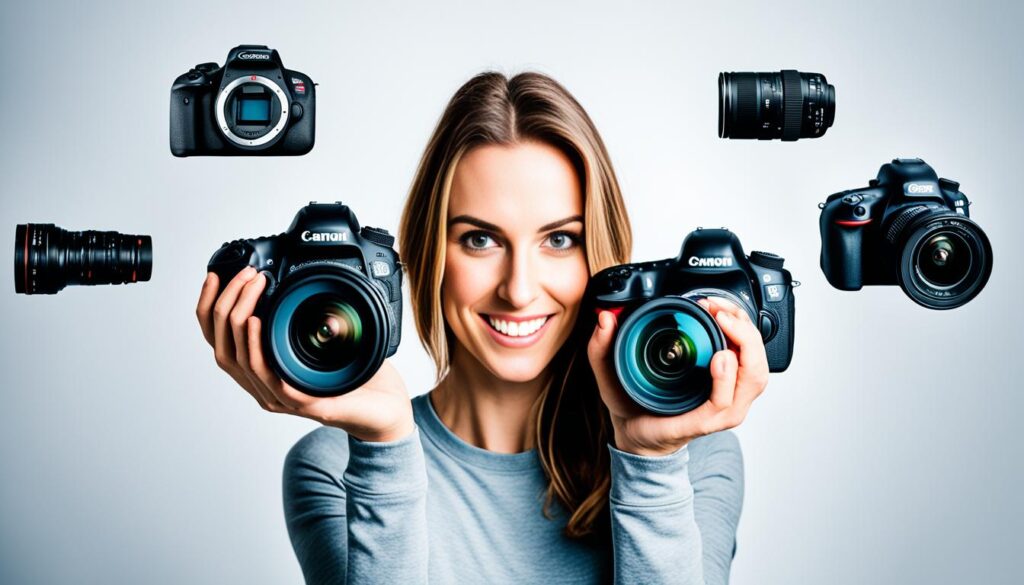
The Benefits of Using a Monopod for Stability
Stability is key in sports photography to ensure sharp and blur-free images. Using a monopod offers stability while allowing flexibility in movement. It helps to minimize camera shake, especially for longer focal lengths that can be heavy and difficult to handhold. With a monopod, you can maintain stability for action shots while being more mobile than a tripod.
Exploring Mirrorless Cameras for Sports Photography
Mirrorless cameras have gained popularity in sports photography due to their compact size, lightweight build, and advanced features. They offer fast and accurate autofocus, high burst shooting rates, and silent operation, making them ideal for capturing action shots without disturbing the game.
| Camera | Advantages |
|---|---|
| Canon EOS-1D X Mark II | Professional-grade DSLR camera with excellent autofocus, high-speed shooting, and robust build quality. |
| Canon EOS R5 | Mirrorless camera with advanced autofocus, high-resolution sensor, and impressive video capabilities. |
Nurturing a Passion for Sports and Photography
A passion for sports and photography is essential to becoming a successful sports photographer. By combining these two passions, you can capture the essence of sports through your lens and create compelling images that tell captivating stories. Here are some key ways to nurture your passion for sports and photography:
- Stay Updated with Sports: Keep a keen eye on the latest sports events, matches, and tournaments. Follow your favourite sports teams and athletes, and stay informed about the latest news and developments in the sports world. This will help you stay updated with current trends and better understand the sports you photograph.
- Study the Work of Other Sports Photographers: Take the time to study the work of renowned sports photographers. Analyze their composition, lighting techniques, and creative approaches to capturing sports moments. By studying their work, you can gain inspiration and learn new techniques to apply to your photography.
- Attend Sporting Events: Immerse yourself in sports by attending live sporting events. This will allow you to experience sports’ energy, emotion, and dynamics firsthand. By being present at sporting events, you can capture unique moments and build a portfolio that showcases your ability to freeze action and capture the essence of each sport.
- Practice Photography Skills: Dedicate time to practising and improving your photography skills. Experiment with different camera settings, angles, and lighting conditions. You can refine your technique and develop a unique style by continuously practising. Whether capturing fast-paced action shots or documenting athletes’ emotions, practice will help refine your photography skills and ensure you are always ready to capture sports moments.
Nurture your passion for sports and photography to grow as a sports photographer continuously. Remember that passion is the driving force behind exceptional sports photography. With dedication and a love for sports and photography, you can create images that truly resonate with viewers and capture the essence of the sports world.
Building a Professional Portfolio
Building a professional portfolio is crucial for showcasing your skills and attracting potential clients or employers in the sports industry. Your portfolio serves as a visual representation of your abilities and creativity in sports photography. In this section, I will guide you through creating an impressive sports photography portfolio highlighting your best work and demonstrating your expertise.
How to Showcase Your Best Sports Shots
When selecting images for your portfolio, it’s essential to choose your best sports shots that demonstrate your technical skills, creativity, and ability to capture the essence of the sport. Consider the following tips to showcase your best work:
- Select a variety of sports: Include photographs from different sports to showcase your versatility as a sports photographer. Capture different events and explore various sports to showcase your range and adaptability.
- Highlight skill and creativity: Choose images that emphasize your technical skills, such as capturing action shots at the perfect moment or using unique angles and compositions. Showcase your ability to tell a story through your images.
- Curate your collection: Be selective and only include your strongest images in your portfolio. Remove any repetitive or weaker shots that do not contribute to showcasing your skills effectively.
Using Projects to Demonstrate Your Skills
In addition to individual sports shots, consider incorporating themed projects into your portfolio. Projects allow you to showcase your skills and creativity more focused and cohesively. Here are some ideas for projects that can elevate your sports photography portfolio:
- Capturing different sports and events: Create projects focusing on specific sports or events to demonstrate your ability to capture each sport’s unique atmosphere and action. For example, you could create a project showcasing the intensity of football matches or the gracefulness of gymnastics.
- Highlighting skill and creativity: Develop projects that showcase your technical skills and creativity. This could include projects experimenting with different lighting techniques, compositions, or perspectives.
- Showcasing versatility: Demonstrate your versatility by including projects that cover a wide range of sports or events. This shows potential clients or employers that you can adapt to different settings and capture compelling images across various sports.
By incorporating projects into your portfolio, you can provide a deeper insight into your abilities as a sports photographer and demonstrate your dedication to your craft.
Consider using online platforms for an organized and visually appealing presentation when presenting your portfolio. These platforms provide a professional and easily accessible way for potential clients or employers to view your work. Ensure that your portfolio is easy to navigate and that the images are showcased in high quality.
By building a professional portfolio that showcases your best sports shots, utilizing projects to demonstrate your skills, and presenting your work effectively, you can position yourself as a skilled and creative sports photographer in the competitive sports industry.
How to Become a Sports Photographer: A Step-by-Step Guide
Becoming a successful sports photographer requires a strategic approach and a combination of essential steps. In this section, I will provide a step-by-step guide to help you pursue a career in sports photography and achieve your goals.
1. Gain Experience: The first step is gaining sports photography experience. Start by practising your skills at local sporting events, capturing the action and mastering the art of freezing crucial moments. Take every opportunity to refine your technique and understand the dynamics of different sports.
2. Start as a Freelance Sports Photographer: As a beginner, starting as a freelance sports photographer can be a great way to gain exposure and build your portfolio. Offer your services to local sports organizations, clubs, or athletes to capture their events and highlight their achievements.
3. Seek Internships and Assistant Roles: To further enhance your skills, seek internships or assistant roles with experienced sports photographers. This will provide valuable learning opportunities, allow you to network with industry professionals, and give you insights into the sports photography business.
4. Build a Network: Building a professional network is crucial for establishing yourself in the industry. Attend sports events, conferences, and workshops to connect with athletes, coaches, and other photographers. Utilize social media platforms to showcase your work and engage with potential clients and collaborators.
5. Continuous Learning and Improvement: Sports photography is a dynamic field that requires continuous learning and improvement. Stay updated with the latest sports photography trends, techniques, and equipment. Use online courses, workshops, and educational resources to expand your knowledge and enhance your skills.
By following this step-by-step guide, you can pave your way towards a successful career in sports photography. Remember, perseverance and dedication are key to achieving your goals in this competitive industry.
The Importance of Networking in the Sports Industry
Networking is crucial to establishing a successful career in the sports industry. As a sports photographer, building connections with athletes and teams can open doors to exciting opportunities and help you gain access to sporting events.
One effective way to make connections is through social media platforms. Utilizing platforms such as Instagram, Twitter, and LinkedIn allows you to interact with industry professionals, showcase your work, and build relationships with athletes and teams. You can establish credibility and trust by regularly sharing your sports photography, engaging with relevant posts, and reaching out to individuals in the industry.
Attending sports events and conferences is another valuable networking opportunity. By immersing yourself in the sports industry, you can meet like-minded professionals, collaborate with sports publications, and connect with athletes and teams in person. These face-to-face interactions can help solidify relationships and leave a lasting impression.

Collaborating with sports publications is also beneficial for networking. Contributing your sports photography to magazines, websites, and blogs allows you to showcase your work and expertise to a broader audience. This exposure can lead to new connections and future opportunities within the industry.
By networking effectively, you can gain access to exclusive sporting events and establish yourself as a trusted and reliable sports photographer. Building relationships with athletes and teams enhances your portfolio, expands your network, and opens doors for future collaborations. Networking is ongoing, so leverage social media, attend events, and collaborate with industry professionals to propel your career forward.
Perfecting Your Technique and Style
Capturing exceptional sports photographs requires honing your technique and developing a unique style. Focusing on perfecting your technique and incorporating your creative vision into your work is essential to take your sports photography to the next level. Here are some key elements to consider:
Mastering Camera Settings
Understanding your camera settings is essential for capturing stunning sports photographs. Different sports require different settings to freeze the action and achieve optimal results. Experiment with different shutter speeds to capture fast-paced action, adjust your aperture to control depth of field, and choose the appropriate ISO to maintain image quality in varying lighting conditions.
Experimenting with Angles and Composition
One way to stand out in sports photography is to experiment with unique angles and compositions. Explore different perspectives to bring a fresh and dynamic look to your images. Try shooting from low angles to emphasize the power and intensity of athletes, or experiment with overhead shots to capture the overall movement of the game. Additionally, pay attention to composition by using leading lines, the rule of thirds, and framing techniques to create visually striking photographs.
Understanding Light and Exposure
Lighting is crucial in sports photography, and understanding how to use it to your advantage is key. Pay attention to the direction and quality of light to create dramatic effects and highlight the subject. While shooting outdoors, consider the time of day and how it affects the lighting conditions. Additionally, be mindful of exposure settings to ensure your images are correctly exposed, preserving details in highlights and shadows.
By perfecting your sports photography technique, developing a unique style, and mastering camera settings, angles, composition, and light, you can elevate your work and capture captivating images that convey the intensity and emotion of sports.
Finding Your Niche in Sports Photography
Finding your niche in sports photography is crucial to standing out in a competitive industry. You can cater to niche markets and capitalize on unique opportunities by specialising in a specific sport or genre. In this section, we will explore various sports and events, delve into the essence of each sport, and discuss how to adapt to the dynamics of different sports. Additionally, we will highlight niche markets in sports photography, such as underwater, extreme, and aerial sports photography.
Exploring Various Sports and Events
One of the first steps in finding your niche is to explore the wide range of sports and events available. Each sport has unique characteristics, rules, and nuances that make it distinct. By immersing yourself in different sports, you can capture the essence of each and find the ones that resonate with you personally and creatively. Additionally, attending various sporting events will provide valuable experience and opportunities to practice your photography skills.
When exploring different sports, take the time to learn the rules and understand the game’s dynamics. This knowledge will enable you to anticipate and capture decisive moments that truly convey the spirit and intensity of the sport. By immersing yourself in the world of each sport, you can develop a deeper appreciation and understanding that will enhance your ability to capture compelling sports photographs.
Capitalizing on Unique Sports Photography Opportunities
In addition to exploring various sports, it’s essential to capitalize on unique photography opportunities within the sports world. Consider specializing in niche markets that appeal to a specific audience. For example, underwater sports photography allows you to capture the beauty and grace of athletes in aquatic settings. On the other hand, extreme sports photography allows you to capture the adrenaline and excitement of high-risk sports.
Aerial sports photography is another niche market that offers a truly unique perspective. By capturing sports from above, you can showcase the scale and grandeur of sporting events while highlighting the athleticism and skill of the athletes. These unique sports photography opportunities allow you to differentiate yourself in the industry and cater to specific clients or markets.
By finding your niche in sports photography, you can establish yourself as an expert in a particular area, attracting clients and opportunities that align with your interests and style. Whether underwater, extreme, or aerial sports photography, identifying a niche allows you to stand out and create a distinct brand.
Remember that finding your niche doesn’t mean limiting yourself to a single sport or genre. You can still explore and capture other sports and events outside your niche. However, having a specialization allows you to build a strong portfolio and cater to specific clients or markets looking for expertise in that area.
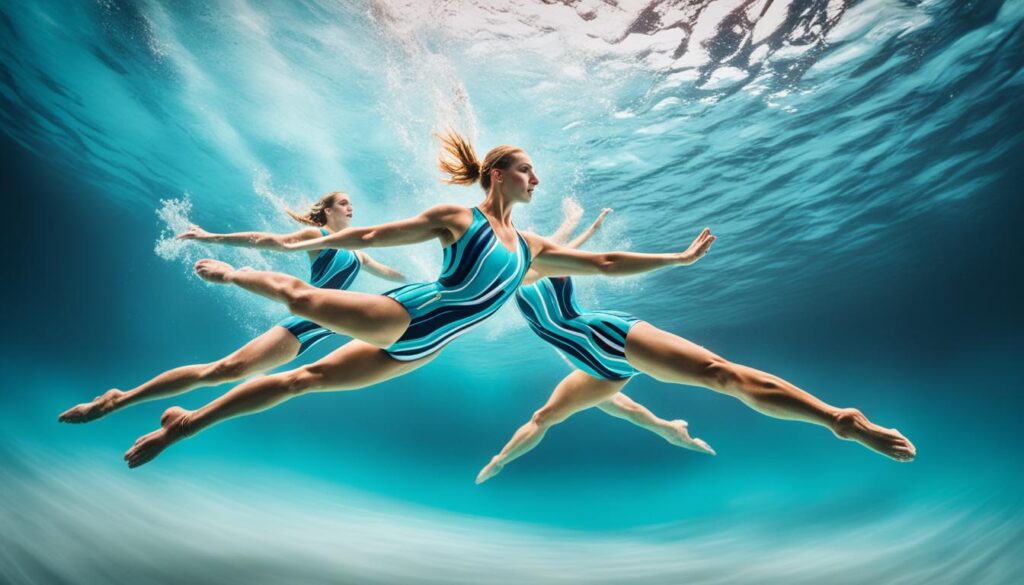
Educational Paths to Enhance Your Sports Photography Career
Continuing education is vital in advancing your skills and knowledge as a sports photographer. You can consider various educational paths to enhance your sports photography career. Whether you’re interested in pursuing a degree, attending specialized courses, or exploring online learning resources, continuous education can provide you with the tools and techniques necessary to stay updated with the latest trends in sports photography.
If you’re passionate about photography, you may consider pursuing a degree in photography or journalism to gain a comprehensive understanding of the field. A degree program can provide a strong foundation in technical skills, visual storytelling, and critical thinking, essential for a successful sports photography career. Universities and colleges often offer photography or journalism programs with coursework tailored explicitly to sports photography. This educational path not only equips you with the necessary technical knowledge but also exposes you to a network of industry professionals and mentors who can guide you in your career.
In addition to formal education, specialized sports photography courses, workshops, and seminars can significantly enhance your skills in capturing dynamic sports images. These courses are designed to provide you with hands-on experience, practical tips, and valuable insights from professional sports photographers. They cover various topics, such as sports action techniques, equipment usage, composition, lighting, and post-processing. These focused learning opportunities allow you to acquire specialized knowledge and skills specific to sports photography, helping you develop your style and vision.
Online learning resources have also become increasingly popular among sports photographers. Platforms such as Udemy, Coursera, and Skillshare offer various online courses specifically tailored to sports photography. These courses provide flexibility and convenience, allowing you to learn at your own pace and from the comfort of your home. They often include video tutorials, assignments, and instructor feedback, ensuring a comprehensive learning experience. Online communities and forums associated with these platforms also provide opportunities for networking and exchanging knowledge with fellow sports photography enthusiasts.
Whether you choose to pursue a degree, attend specialized courses, or explore online learning resources, continuous education is essential for staying updated with the latest techniques and trends in sports photography. It not only enhances your technical skills but also expands your creative vision and opens doors to exciting opportunities in the sports industry.
| Educational Paths | Description |
|---|---|
| Pursuing a degree in photography or journalism | A comprehensive educational program that provides a strong foundation in technical skills, visual storytelling, and critical thinking tailored explicitly to sports photography. |
| Specialized sports photography courses, workshops, and seminars | Hands-on learning opportunities focus on sports action techniques, equipment usage, composition, lighting, and post-processing. |
| Online learning resources | Platforms that offer a wide range of online courses, providing flexibility and convenience for learning sports photography at your own pace. |
Conclusion
In summary, becoming a sports photographer requires a combination of passion, skill, and dedication. Throughout this article, we have explored the essential steps and skills needed to pursue a career in sports photography. From understanding the role of a sports photographer to building a professional portfolio and finding your niche, each aspect plays a vital role in your journey to becoming a successful sports photographer.
Remember, having the right equipment is crucial for capturing action shots, and continuously perfecting your technique and style will set you apart from the crowd. Networking in the sports industry and utilizing social media platforms will help you build valuable connections and showcase your work to potential clients and employers.
Lastly, don’t underestimate the importance of continuous learning and education. By pursuing specialized sports photography courses or workshops, you can stay updated with the latest techniques and trends in the field, enhancing your skills and advancing your sports photography career.
In conclusion, becoming a sports photographer is an exciting and fulfilling path for those passionate about sports and photography. With determination, practice, and a solid commitment to your craft, you can turn your dreams into reality and capture sports’ thrilling moments and stories through your lens.
FAQ’S
Q: What gear do I need to start shooting sports photography?
A: To shoot sports, you will need a DSLR camera with a fast shutter speed, long zoom lenses, and possibly a telephoto lens for capturing action shots from a distance.
Q: How can I get into sports photography?
A: To get into sports photography, you can attend local sporting events and practice capturing the action. Networking with professionals in the field and learning from experienced sports photographers can also help you get started.
Q: What are some tips for shooting sports indoors?
A: Shooting indoor sports may require different camera settings, such as higher ISO, to compensate for low light conditions. Using a fast lens and adjusting your white balance can also improve the quality of indoor sports photos.
Q: What is the average salary for sports photographers?
A: The average salary for sports photographers may vary depending on experience, location, and employer. However, professional sports photographers can earn a decent income capturing action and sports moments.
Q: What type of photography is sports photography?
A: Sports photography is a specialized genre that focuses on capturing moments of action and excitement during sporting events. It requires specific skills and equipment to photograph sports effectively.
Q: What advice do you have for aspiring sports photographers?
A: Aspiring sports photographers should practice regularly, study the work of successful sports photographers, and seek opportunities to gain experience shooting different sports. Building a solid portfolio is key to becoming a professional sports photographer.
Q: What are some popular lenses for sports photography?
A: Many sports photographers use telephoto lenses with a long zoom range to capture action shots from a distance. Fast prime lenses with wide apertures are famous for shooting sports in low light conditions.


